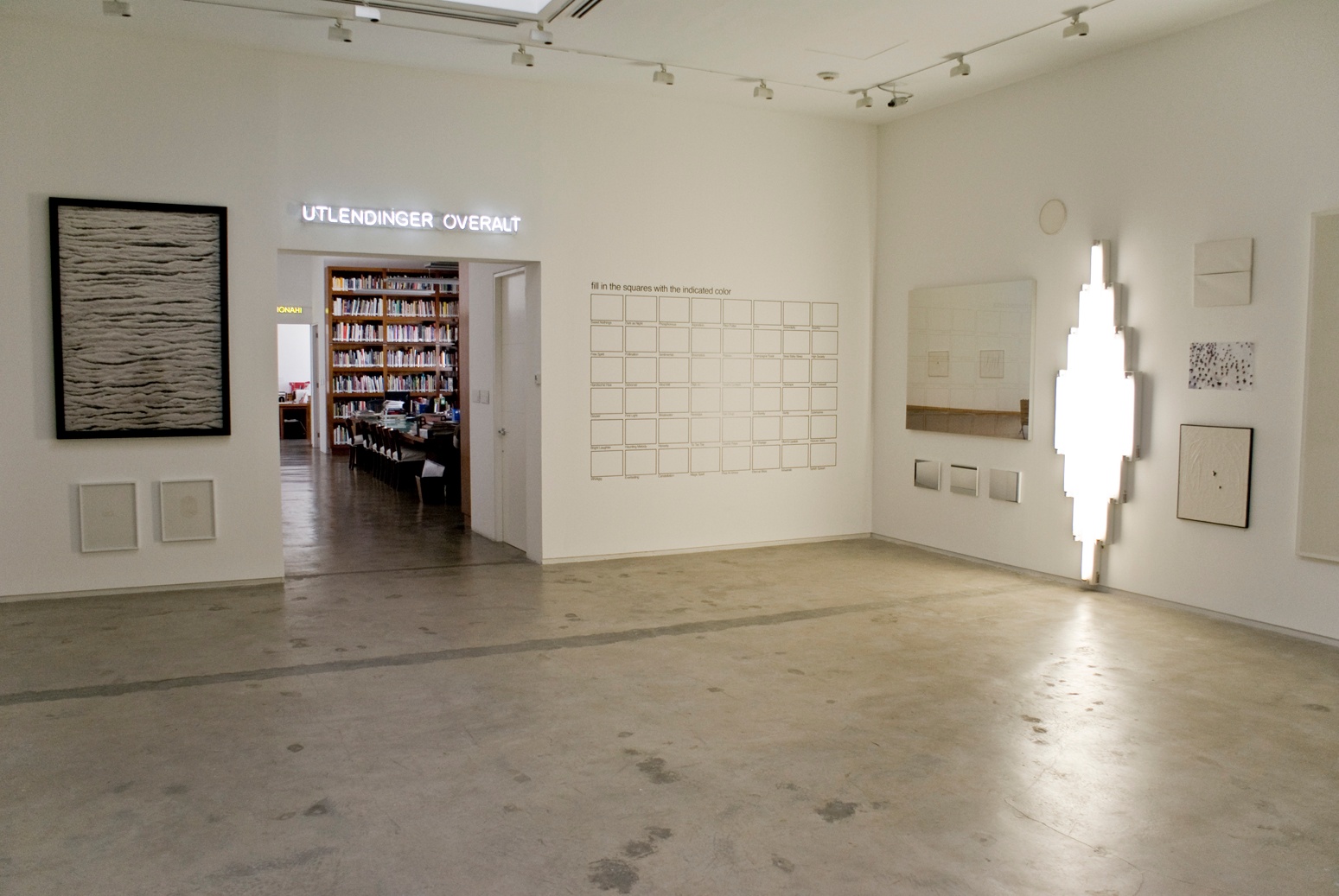
El Gabinete Blanco emerged from a group of exquisite white monochromes by Robert Ryman and attempted to reconcile two opposing models of collections: the nineteenth-century room and the modernist white cube of the twentieth century.
El Gabinete Blanco has its origin in a group of paintings by Robert Ryman in la Colección Jumex, three of which are included in the exhibition. Ryman is known for his persistent and rigorous investigation of painting by way of the color white. By reducing his work to these two elements – painting and white – the artist can explore seemingly endless combinations through variations of paint (acrylic, oil, gesso, casein, gouache, enamelac, graphite and Varathane), the support (newsprint, gauze, tracing paper, corrugated cardboard, linen, jute, fiberglass mesh, aluminum, steel, copper and canvas) and the means of application (different kinds of brushes, knives and spatulas).
In this context, and despite its apparently reductionist character, white is open to a wide spectrum of readings: it is the elemental, the primary, the austere and the minimal. White is the absence of color and the superposition of all the colors, it represents the beginning of a story (the blank page) and the accumulation or final chapter of many others (as in Malevich’s Suprematist Composition: White on White, 1918). Thus, white is one of those uncanny words whose meaning can transform and coincide with its opposite. As Freud writes: “Thus heimlich is a word the meaning of which develops in the direction of ambivalence, until it finally coincides with its opposite, unheimlich”.
For Ryman, white is above all an instrument to see more. As the artist himself states, “White has a tendency to make things visible. With white, you can see more of a nuance; you can see more. I’ve said before that if you spill coffee on a white shirt, you can see the coffee very clearly. If you spill it on a dark shirt, you don’t see it as well.” White as a mechanism to see more recalls the white cube, and in fact the title of this exhibition plays with three historically distinct models for the exhibition apparatus: the seventeenth-century cabinet of curiosities or Wunderkammer, the historical precursor of the modern museum; the 19th-century salon of paintings; and the 20th-century white cube. In this sense, the show is presented as a cabinet of white monochromes, gathering, under Ryman’s spirit, a wide range of possibilities – painting, drawing, sculpture, object, installation, photography, video, light, artist’s book, performance documentation and vinyl or paint on wall. In reconciling the white cube with its opposing historical models (the cabinet and the salon), the result is also uncanny: an excess of whites.
- Lawler, Louise
- Orozco, Gabriel
- Ligon, Glenn
- Costa, Eduardo
- Ryman, Robert
- Gomes, Fernanda
- Fontaine, Claire
- Varejão, Adriana
- Toledo, Laureana
- Thomson, Mungo
- Robbio, Nicolás
- Romo, Sebastián
- Pape, Lygia
- Muniz, Vik
- Martensson, Per
- López, Mateo
- Lambri, Luisa
- LaDuke, Tom
- Fontana, Lucio
- Flavin, Dan
- Fernández, Magdalena
- Elmgreen, Michael
- Santo, Iran do Espirito
- Dragset, Ingar
- Dávila, Jose
- Corse, Mary
- Araujo, Juan
- Aranda, Julieta








